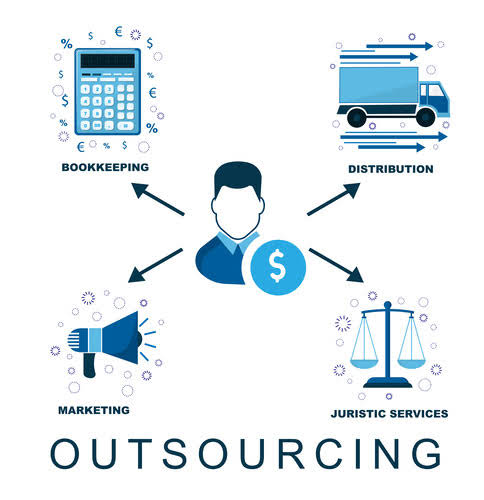
To illustrate, we will close the $100 original petty cash fund by returning the cash to the checking account with a debit to cash and a credit to petty cash. Usually one individual, called the petty cash custodian or cashier, is responsible for the control of the petty cash fund and documenting the disbursements made from the fund. By assigning the responsibility for the fund to one individual, the company has internal control over the cash in the fund. To record the petty cash transactions for August, you would need to record the expenses as a journal entry. To use petty cash, simply grab however much cash you need from the lockbox (say, $10).
As we have discussed, one of the hardest assets to control within any organization is cash. One way to control cash is for an organization to require that all payments be made by check. However, there are situations in which it is not practical to use a check. For example, imagine that the Galaxy’s Best Yogurt runs out of milk one evening. It is not possible to operate without milk, and the normal shipment does not come from the supplier for another 48 hours.
What is petty cash?
It is also appropriate for companies to either keep their petty cash in just one office or the main office of each division of the company. The important thing is to monitor your petty cash and keep track of it on a ledger. Therefore, it is only appropriate to keep petty cash on hand when a trusted employee can keep an eye on it. If you have an office manager, they’re the https://www.bookstime.com/articles/going-concern most likely choice to manage the petty cash fund. Small businesses will often record all disbursements in a log and put one person in charge of petty cash to make sure none of the funds go missing. With real-time spend updates and built-in spending limits by category, you can access all the benefits of a petty cash fund without the risk of human error, fraud or theft.

Employees take money from the petty cash account, recording each transaction with date, amount, vendor (who was paid), and business purpose. Next, total the amount of all the outstanding slips (plus attached receipts). This figure should be the same as the withdrawn sum you calculated from the account starting and ending balances. And the amount of cash you have in your storage box or drawer should be the same as the current balance of the account. On the downside, the convenience of petty cash can also make it a problem, and a risk. Cash is hard to secure and impossible to track; it’s very easy for bills to disappear without a trace—even if you’ve established a careful system of receipts or vouchers.
How to set up and use petty cash in your business
We will not use the petty cash in a journal entry again unless we are changing this original amount. Petty cash is the money a business keeps on hand to pay for miscellaneous purchases. Most purchases made with petty cash are unexpected expenses that can pop up, such as morning coffee for a meeting or dinner why do businesses use petty cash funds? for an employee working overtime. Every once in a while, compare the petty cash balance recorded in your petty cash log with the actual remaining amount of cash in your lockbox. If the numbers don’t match, that means something went wrong, and you need to review each expense for any discrepancies.
- During the past two decades, Western governments tended to focus more on cutting off the finances of other Islamist organizations while Hamas received a lower priority, former U.S. officials said.
- Whenever possible, local units should use the PCard instead of petty cash.
- Though not literally cash, it’s money that can be easily and quickly accessed, which is why it’s “on hand.”
- On the downside, the convenience of petty cash can also make it a problem, and a risk.
- Documenting transactions is the way a business documents business expenses for tax purposes.
University PolicyThe purpose of a petty cash fund is to provide cash to business units sufficient to cover minor expenditures. The use of petty cash funds should be limited to reimbursement of staff members and visitors for small expenses, generally not to exceed $50, such as taxi fares, postage, office supplies, etc. Wherever possible, local units should use the PCard instead of petty cash. Companies assign responsibility for the petty cash fund to a person called the petty cash custodian or petty cashier. To establish a petty cash fund, someone must write a check to the petty cash custodian, who cashes the check and keeps the money in a locked file or cash box. The journal entry to record the creation of a petty cash fund appears below.
Set Up Petty Cash Policies
No uploading receipts or assigning cash custodians to update the spreadsheet. Cash transactions have been on the decline for decades and plummeted even more in recent years due to the pandemic. All these details are usually completed through a petty cash voucher/worksheet. These worksheets come in different forms but generally require similar information. The best way to control the account is to designate one person in the office to be responsible. Petty cash refers to a small amount of hard currency that a businesses will keep on hand to pay for miscellaneous and unexpected items, such as team lunches, birthday cakes, or office snacks.
This policy establishes the proper uses and administration of petty cash funds. The University requires each petty cash fund to have an approved Custodian, who documents expenditures, keeps receipts, and safeguards the funds. Wherever possible, local units should use other disbursement methods (i.e., HCOM, PCard) instead of petty cash. At the end of July, in the petty cash box there should be a receipt for the postage stamp purchase, a receipt for the milk, a receipt for the window cleaner, and the remaining cash. The employee in charge of the petty cash box should sign each receipt when the purchase is made.
Risk Management & Audit Services
Petty cash is usually a relatively small amount, and is grouped with the general cash account on the balance sheet in current assets. It’s important to account for petty cash uses in your general ledger because it is an expense recorded in your financial records, like the balance sheet. Depending on the types of expenses and your industry, you may also be able to claim itemized deductions for these expenses. Entries are needed to (1) establish the fund, (2) increase or decrease the balance of the fund (replenish the fund as cash is used), and (3) adjust for overages and shortages of cash.

Only when the fund is reimbursed, or when the end of the accounting period arrives, does the firm make an entry in the journal. Credit cards, debit cards, and online transactions all automatically register in a neat summary. This avoids the major pitfalls of petty cash funds and gives you more visibility over company spend. The purpose of a petty cash fund is to provide business units with sufficient cash to cover minor expenditures.
Funding Options
By having a petty cash cashier and a petty cash custodian, the dual-process helps to keep the funds secure and ensure that only those authorized have access to it. Credit cards are OK for small purchases to help manage your monthly cash flow, and if you pay off all or most of the balance on time. Servicing credit card debt could get even costlier too, if the Fed decides to hike its benchmark, short-term fed funds rate again before the year ends amid its ongoing fight to lower inflation to its 2% goal.

The petty cash custodian is charged with distributing the cash and collecting receipts for all purchases or any uses of the funds. As the petty cash total declines, the receipts should increase and add up to the total amount withdrawn. It can be in the form of actual money, like amounts you haven’t yet deposited in the bank or smaller bills and coins that you keep in the cash register to make change for customers.
The English word “petty” derives from the French petit, which means “small” or “little.” Likewise, “petty” means minor or insignificant. So petty cash refers to a small sum of money set aside for trifling or little purchases, as opposed to major expenses or bills. The days of cheap money are gone with the Fed undertaking the most aggressive rate hike campaign in four decades to battle inflation.
- We make entries to the Petty Cash account only when the fund is established or when the amount of the fund is changed or when the fund is closed and we want to add back cash in exchange for the petty cash vouchers.
- This sum is the total withdrawn from the account during that time period.
- This person is responsible for determining when it is appropriate to use the petty cash fund.
- Whatever you decide, it’s important that only one person have access to the fund at any time, to avoid unaccounted for withdrawals and/or theft.
- Wherever possible, local units should use other disbursement methods (i.e., HCOM, PCard) instead of petty cash.
- Once you determine who will handle petty cash, you’re ready to cash a check and deposit the funds into the petty cash lockbox.
